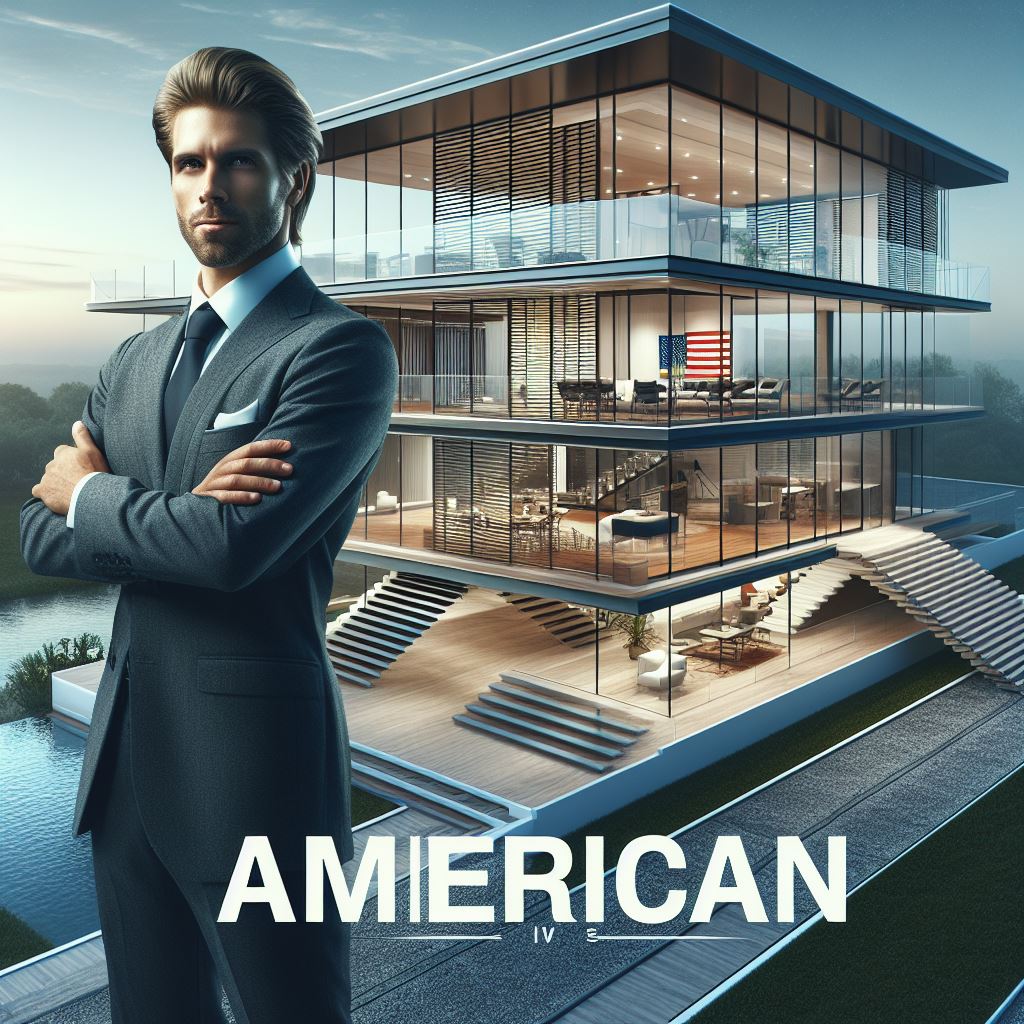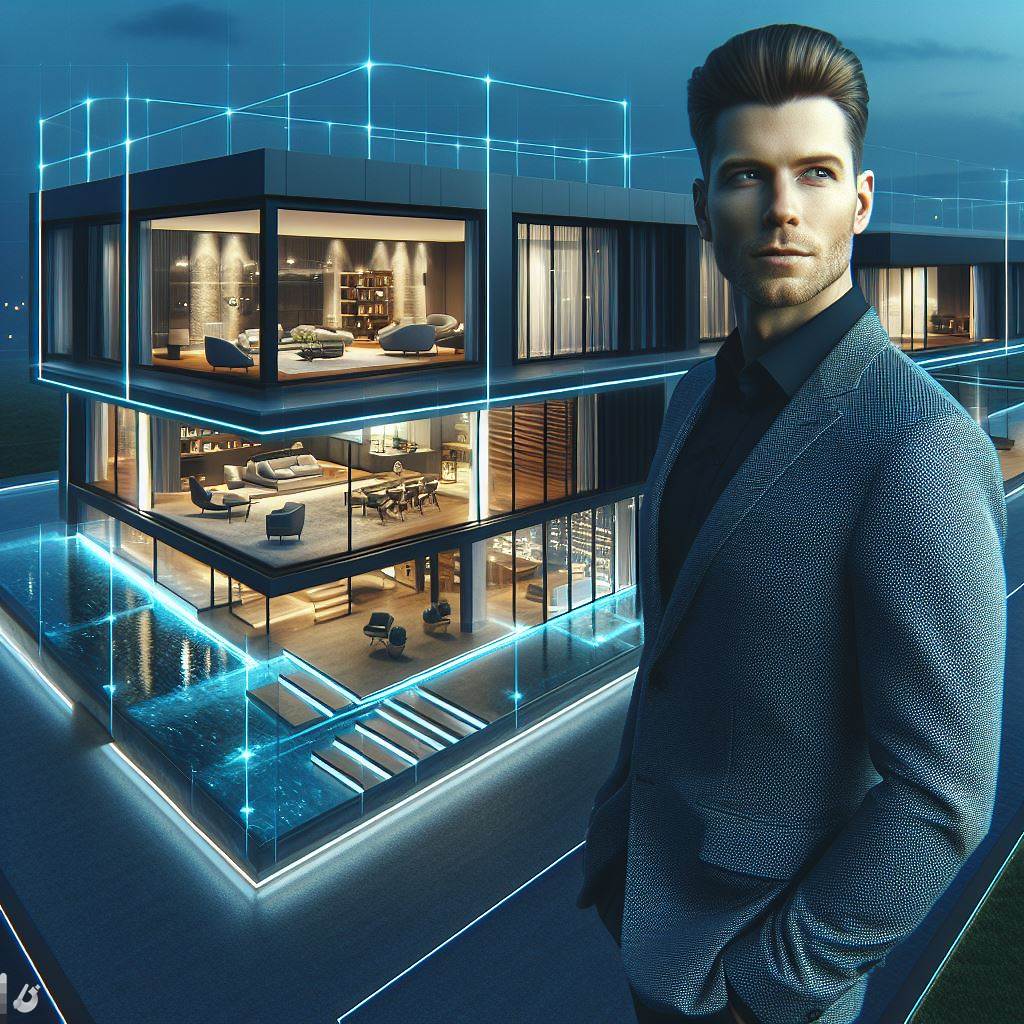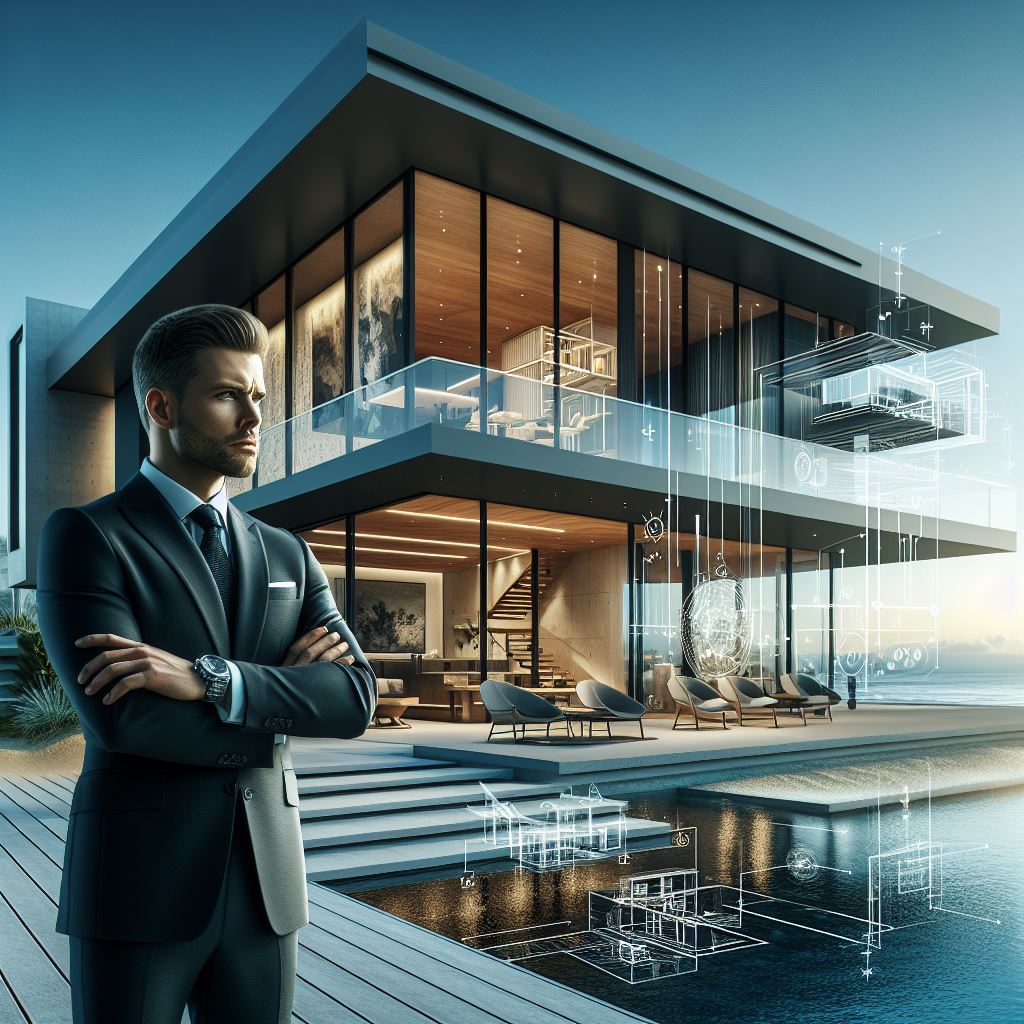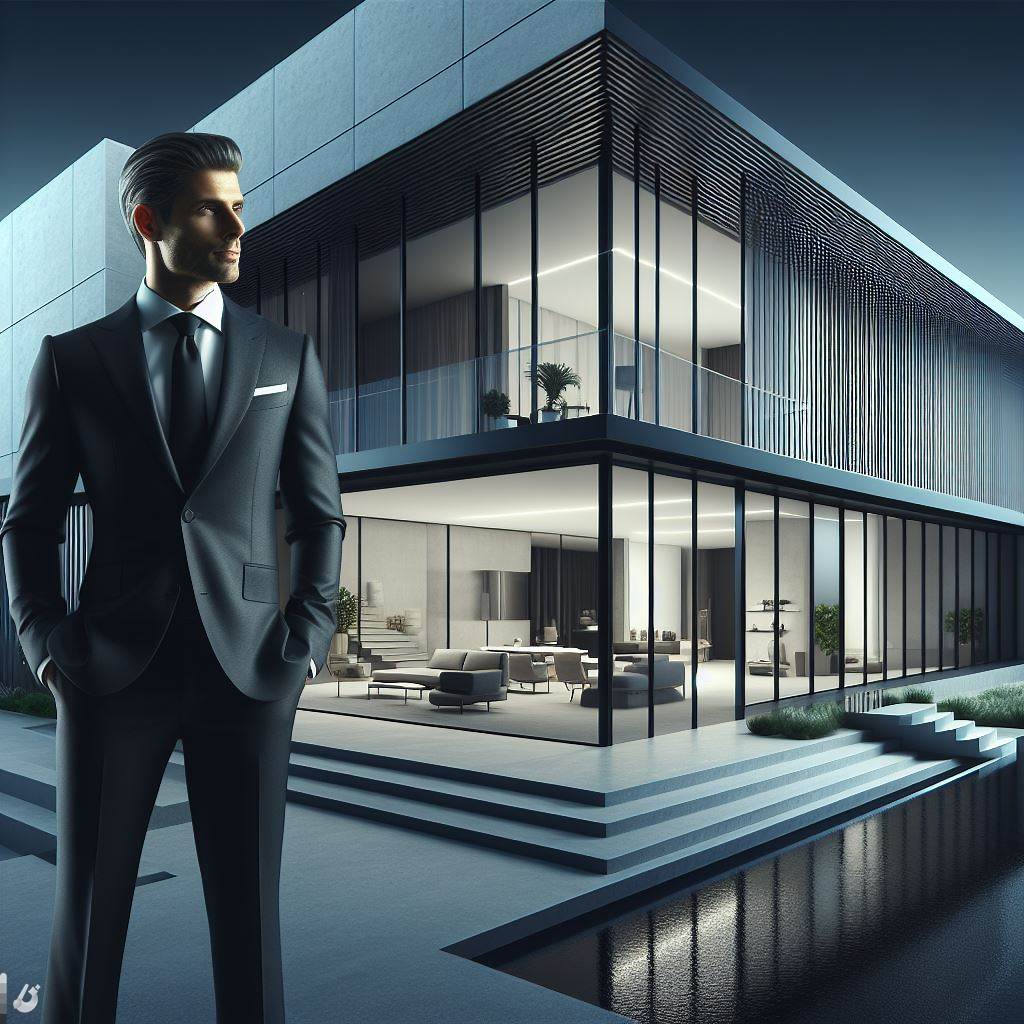Introduction
Contemporary estates have embraced the space-age style in architecture, creating visually stunning homes that are a testament to modern design and technological advancements.
This futuristic style takes inspiration from the space age, incorporating sleek lines, geometric shapes, and innovative materials to create a truly unique and eye-catching aesthetic.
The space-age style emerged in the mid-20th century, in response to the rapid advancements in technology and the excitement surrounding space exploration.
Its aim was to create buildings that reflected the optimism and progressive spirit of the time.
Architects drew inspiration from futuristic concepts and scientific innovations, such as rockets, satellites, and spacecraft.
Contemporary estates adopting the space-age style push the boundaries of design.
They often feature large glass windows and open floor plans, blurring the boundary between indoor and outdoor spaces.
These buildings utilize state-of-the-art materials, such as steel, glass, and concrete, to create a sleek and minimalist look.
The integration of technology is also a common characteristic, with smart home systems and energy-efficient features seamlessly incorporated into the design.
Not only do these space-age-inspired contemporary estates look impressive, but they also offer functionality and convenience.
The open floor plans and light-filled spaces create a sense of freedom and openness, enhancing the overall living experience.
The careful integration of technology allows homeowners to control various aspects of the house with ease, from temperature and lighting to security systems.
In essence, the space-age style in contemporary estates offers a unique architectural experience.
Its futuristic design, innovative materials, and integration of technology create visually striking homes that are both functional and aesthetically pleasing.
From the sleek lines to the open floor plans, these homes redefine the concept of modern living.
History of Space-Age Style
Overview of the Space Age movement in the 1960s and 1970s
The Space Age movement emerged during the 1960s and 1970s, driven by the excitement surrounding space exploration.
Space missions, such as the Apollo program and the first moon landing in 1969, inspired a new era of design.
People were captivated by the futuristic ideas and technologies associated with space travel.
This fascination with the cosmos gave birth to a unique style characterized by sleek lines, geometric shapes, and a minimalist aesthetic.
Influence of futuristic design on architecture
The space-age style heavily influenced architecture, pushing boundaries and challenging traditional design principles.
Architects began to experiment with new materials and construction techniques to create structures that resembled spaceships and futuristic habitats.
They embraced the use of steel, glass, and plastic, reflecting the industrial and technological progress of the time.
Buildings were designed to incorporate forward-thinking concepts, such as energy efficiency and sustainable living.
Examples of iconic space-age architecture
Several iconic buildings exemplify the space-age style and have become symbols of an era.
The TWA Flight Center at John F. Kennedy International Airport in New York City is a prime example.
Designed by Eero Saarinen in 1962, the terminal resembles a futuristic spaceship with its sweeping curves and expansive windows.
Another prominent example is the Habitat 67 in Montreal, Canada, designed by Moshe Safdie for the Expo 67 World’s Fair.
This modular building complex showcases a unique combination of individual living spaces interconnected like blocks in a Tetris game.
These architectural marvels and many others perfectly embody the spirit of the space-age style.
In fact, the Space Age movement of the 1960s and 1970s left an indelible mark on contemporary architecture.
With its focus on innovation, minimalism, and futuristic elements, this style continues to inspire designers and architects today.
By embracing space-age aesthetics, contemporary estates bring a sense of wonder and imagination to their owners and visitors.
Whether it’s the sleek lines of a spaceship-inspired facade or the integration of sustainable technologies, these properties redefine modern luxury.
They serve as a reminder of our fascination with space exploration and the limitless opportunities it holds for design and architecture.
Read: Glass Wonders: Transparent Luxury Houses
Integration of Space-Age Style in Contemporary Estates
The integration of space-age style in contemporary estates has revolutionized the world of modern architecture.
With its sleek and innovative elements, this style has become increasingly popular among homeowners and designers alike.
Contemporary estate design trends
In describing contemporary estate design trends, it is evident that simplicity and functionality are paramount.
The use of open floor plans, sustainable materials, and natural light enhances the overall aesthetic and livability of these homes.
Contemporary estates prioritize a seamless flow between indoor and outdoor spaces, effortlessly blending the boundaries of nature and architecture.
How space-age style elements are incorporated in modern architecture
Space-age style elements play a vital role in modern architecture.
Futuristic materials such as glass, steel, and concrete are used to create a visually striking and innovative appearance.
The clean lines and geometric shapes add a sense of modernity and elegance, while smart home technology and automation systems elevate the living experience to a whole new level.
Benefits and advantages of using space-age style in contemporary estates
One of the major advantages of incorporating space-age style in contemporary estates is the emphasis on efficiency and functionality.
The use of modular and flexible spaces allows homeowners to adapt the layout according to their changing needs.
Additionally, innovative lighting designs create a unique ambiance that transports residents into another dimension.
Another significant benefit of using space-age style is its compatibility with sustainable design principles.
Contemporary estates can integrate energy-efficient features and sustainable materials, reducing the environmental impact while offering a greener and more sustainable living environment.
The integration of space-age style adds a touch of luxury and modernity to contemporary estates.
Its cutting-edge appeal attracts buyers who seek homes that push the boundaries of design and technology.
The sleek and futuristic aesthetic creates a unique selling point for these properties.
In short, the integration of space-age style in contemporary estates has revolutionized the world of architecture.
With its sleek designs, futuristic elements, and emphasis on functionality, this style offers a visually striking and innovative living experience.
The benefits of incorporating space-age style, including efficiency, sustainability, and luxury, make it an attractive choice for homeowners and designers alike.
Read: Luxury Living: The Rise of Vertical Gardens
Notable Contemporary Estates with Space-Age Style
Renowned contemporary estates with space-age design elements
- The Bubble House: This futuristic estate features a curved, transparent structure that resembles a giant bubble.
Its innovative design allows for panoramic views of the surrounding landscape. - The Spaceship Residence: Inspired by sci-fi movies, this estate boasts a sleek, metallic exterior that resembles a spaceship.
Its interior is equally futuristic, with high-tech gadgets and automated systems. - The Jetson’s House: Designed to mimic the iconic cartoon family’s home, this estate showcases a retro-futuristic style with bold colors, geometric shapes, and high-tech appliances.
- The UFO Villa: Shaped like a flying saucer, this extraordinary estate offers a truly out-of-this-world experience.
Its interior features futuristic furnishings and state-of-the-art technology.
Description and features of each estate
- The Bubble House: With its unique design, the Bubble House stands out as an architectural marvel.
Its rounded shape and transparent exterior maximize natural light and create a seamless connection between indoor and outdoor spaces. - The Spaceship Residence: This estate pushes the boundaries of design with its cutting-edge metallic facade.
Inside, residents can enjoy smart home features, such as voice-activated controls and automated lighting systems. - The Jetson’s House: Drawing inspiration from the popular cartoon, this estate captures the essence of a retro-futuristic lifestyle.
Vibrant colors, funky furniture, and innovative appliances transport residents into a world of futuristic living. - The UFO Villa: This estate takes the concept of space-age style to a whole new level.
From its extraterrestrial exterior to its high-tech amenities, every aspect of the UFO Villa screams innovation and modernity.
Impact and recognition of these estates in the architecture industry
- The Bubble House has gained recognition for its forward-thinking design, inspiring other architects to experiment with unconventional shapes and materials.
- The Spaceship Residence has become a symbol of modern luxury and technological advancement.
Its influence on contemporary architecture is evident in the increasing use of sleek metallic exteriors and smart home technologies. - The Jetson’s House has captured the imagination of many, sparking a renewed interest in retro-futuristic aesthetics.
This style has made a comeback in both architectural design and interior decor. - The UFO Villa has pushed the boundaries of architectural innovation, earning accolades and attention from the industry.
Its futuristic design has paved the way for other avant-garde projects that challenge traditional concepts of space and form.
In general, these notable contemporary estates with space-age style have become icons within the architecture industry.
From the Bubble House’s transparent elegance to the UFO Villa’s extraterrestrial allure, these estates have left an indelible mark on the world of design.
Whether inspiring new trends or pushing boundaries, these architectural wonders continue to captivate and inspire.
Read: Opulent Overwater Bungalows Around the World

Space-Age Style in Interior Design
Transition from exterior space-age style to interior design
Space-age style, which emerged in the mid-20th century, has made its way into contemporary interior design.
During the space-age era, architects and designers were fascinated by the possibilities of space exploration.
They incorporated futuristic elements into both the exterior and interior of buildings, creating a unique and forward-thinking aesthetic.
As architecture evolved, the space-age style transitioned from the outer shell of buildings to the interior spaces.
Examples of interior design elements that reflect the space-age style
One example of a space-age inspired interior design element is the use of sleek and minimalist furniture.
Clean lines, geometric shapes, and metallic finishes are often utilized to create a futuristic atmosphere.
Another key element is the use of innovative materials.
From acrylics to molded plastics, interior designers experiment with unconventional materials to add a modern touch.
Lighting plays a crucial role in space-age style interior design.
Futuristic lighting fixtures such as pendant lights and LED strips are used to create a sense of other-worldliness.
How interior designers utilize space-age style to create unique and futuristic living spaces
Interior designers incorporate space-age style to create living spaces that are both unique and forward-thinking.
They strive to create a sense of innovation and exploration through the use of bold colors and patterns.
Bold hues such as vibrant oranges, blues, and greens are often chosen to create a futuristic atmosphere.
Wallpapers featuring abstract or geometric patterns add depth and visual interest to space-age inspired interiors.
To enhance the futuristic vibe, interior designers often incorporate reflective surfaces like mirror or glass.
These materials not only create a sense of spaciousness but also reflect light, adding to the overall ambiance.
Furniture selection is crucial in space-age style interior design.
Chairs and sofas with unconventional shapes and materials are chosen to make a bold statement.
The use of modular furniture allows for flexibility and adaptability in space-age inspired interiors.
Another key aspect is the integration of technology.
Smart home devices, interactive screens, and voice-activated systems are often included to create a truly futuristic living experience.
In review, space-age style has successfully transitioned from exterior design to interior design.
Interior designers utilize sleek furniture, innovative materials, and futuristic lighting to create unique living spaces.
Bold colors, patterns, reflective surfaces, and technology integration enhance the overall futuristic ambiance.
Space-age style in interior design offers a glimpse into the future, allowing homeowners to live in a truly unique and innovative environment.
Read: Smart Gardens: Tech in Elite Outdoor Spaces
Uncover the Details: Rural Luxury: Estates Away from the City
Challenges in Implementing Space-Age Style in Contemporary Estates
Limitations and Constraints in Incorporating Space-Age Elements
- Structural challenges arise when incorporating space-age elements into contemporary estates.
- The use of unconventional shapes and materials may require complex engineering solutions.
- Integrating large windows or transparent walls can compromise privacy and security.
- Space-age design often requires extensive customization, increasing construction time and costs.
- Limitations in available technology may restrict the implementation of futuristic features.
Balancing Functionality with Aesthetics in Modern Architecture
- Achieving a harmonious blend of functionality and aesthetics poses a significant challenge.
- Design choices must prioritize both the practical needs of inhabitants and visual appeal.
- Space-age style emphasizes clean lines and minimalism, requiring efficient storage solutions.
- Maintaining a comfortable living environment while incorporating futuristic elements can be challenging.
- Architects must carefully consider the usability and practicality of space-age design choices.
Overcoming Cost, Practicality, and Maintenance Challenges
- Implementing space-age style in contemporary estates can be financially demanding.
- Unique materials and cutting-edge technology often come at higher costs than traditional alternatives.
- Practicality must be considered to ensure that space-age features meet the needs of daily living.
- Regular maintenance and upkeep can be more challenging with complex space-age elements.
- Specialized knowledge and expertise may be required for the repair and maintenance of futuristic features.
Incorporating space-age style into contemporary estates presents several challenges that designers and homeowners must overcome.
The limitations and constraints involved in incorporating space-age elements require careful navigation.
Balancing functionality and aesthetics is crucial to ensure that the design serves the practical needs of inhabitants while also reflecting the desired futuristic style.
Additionally, the cost, practicality, and maintenance challenges associated with space-age design should be carefully considered before implementation.
By addressing these challenges, homeowners can create truly unique and visually appealing contemporary estates that embody the spirit of the space age.
Future Outlook for Space-Age Style in Contemporary Estates
Speculation on the continued popularity and evolution of space-age style
Space-age style has captured the attention of contemporary homeowners and designers alike.
Its sleek lines, futuristic aesthetics, and innovative materials have made it a favorite choice for those seeking a bold and unique design.
As technology continues to advance, it is highly likely that space-age style will only grow in popularity.
The appeal of living in a home that feels like it belongs in the future is undeniable, and as more people embrace this style, it will continue to evolve and adapt to the changing tastes of homeowners.
Influence of technological Advancements on future space-age Design
Technology plays a crucial role in shaping the future of space-age design.
As advancements continue, materials will become more innovative and accessible, allowing designers to push the boundaries even further.
Smart homes are already becoming more commonplace, with features like voice activation, automated systems, and integrated AI.
In the future, we can expect these technological advancements to be seamlessly integrated into space-age style, creating homes that are not only visually stunning but also highly functional and efficient.
Predictions on how contemporary estates will incorporate space-age style in the future
Looking ahead, it is clear that contemporary estates will continue to incorporate space-age style in exciting and innovative ways.
One prediction is the integration of sustainable and eco-friendly features into this futuristic design.
As the world becomes more conscious of the environmental impact of our choices, homeowners will seek to incorporate renewable energy sources, green roofs, and energy-efficient appliances into their space-age homes.
Another prediction is the use of virtual reality and augmented reality in space-age design.
Imagine being able to visualize and interact with your future home before it is even built.
With the advancements in technology, prospective homeowners will have the ability to walk through a virtual representation of their space-age estate, seeing every detail and making adjustments before construction begins.
Furthermore, the incorporation of biomimicry into space-age design is another intriguing possibility.
Drawing inspiration from nature and its efficiency, contemporary estates could feature organic shapes, biomorphic architecture, and materials that mimic natural processes.
This not only adds an element of visual interest but also creates a connection between the home and its natural surroundings.
In a nutshell, the future outlook for space-age style in contemporary estates is bright and promising. As technology continues to advance and homeowners seek unique, futuristic designs, this style will only grow in popularity.
The influence of technological advancements will shape the evolution of space-age design, with smart homes and sustainable features becoming integral parts of this aesthetic.
Predictions for the future include the use of virtual reality, augmented reality, and biomimicry, pushing the boundaries of what is possible in space-age design.
Ultimately, the future of contemporary estates lies in the hands of designers and homeowners who are willing to embrace the bold and innovative nature of space-age style.
Conclusion
The space-age style in contemporary estates is a futuristic aesthetic that embodies innovation and technology.
It features sleek lines, geometric shapes, and metallic accents, creating a sense of luxury and modernity.
As a design enthusiast, I find the space-age style incredibly captivating.
Its bold and unconventional approach adds a sense of drama and excitement to any space, making it a perfect choice for those who seek to push boundaries and stand out from the crowd.
If you haven’t already, I urge you to explore the world of space-age design in contemporary estates.
The interplay of form and function in this style is truly remarkable and can leave a lasting impression.
Take the time to appreciate its uniqueness and embrace its allure.
By appreciating and exploring space-age design, we encourage the continued evolution of modern architecture.




